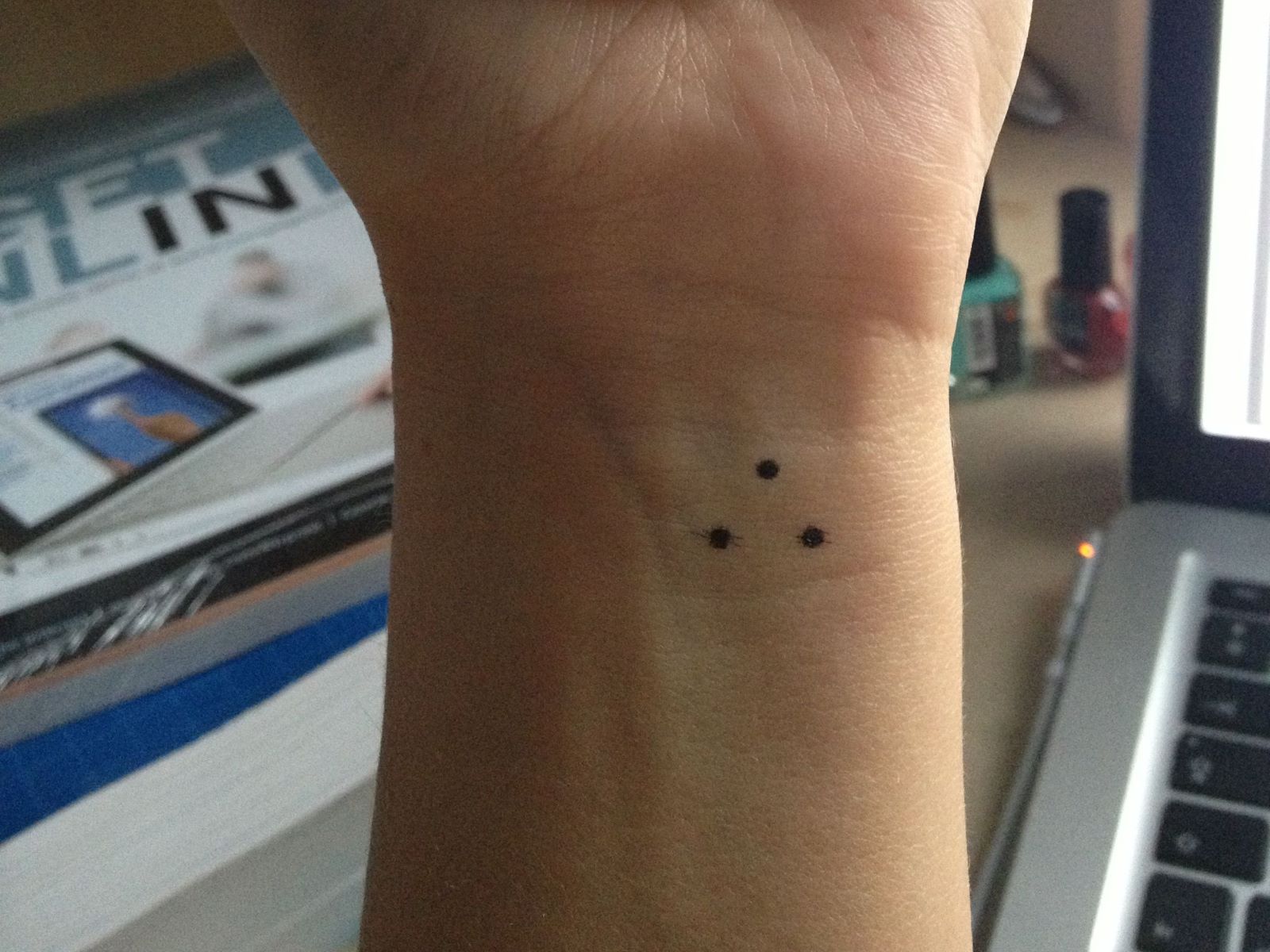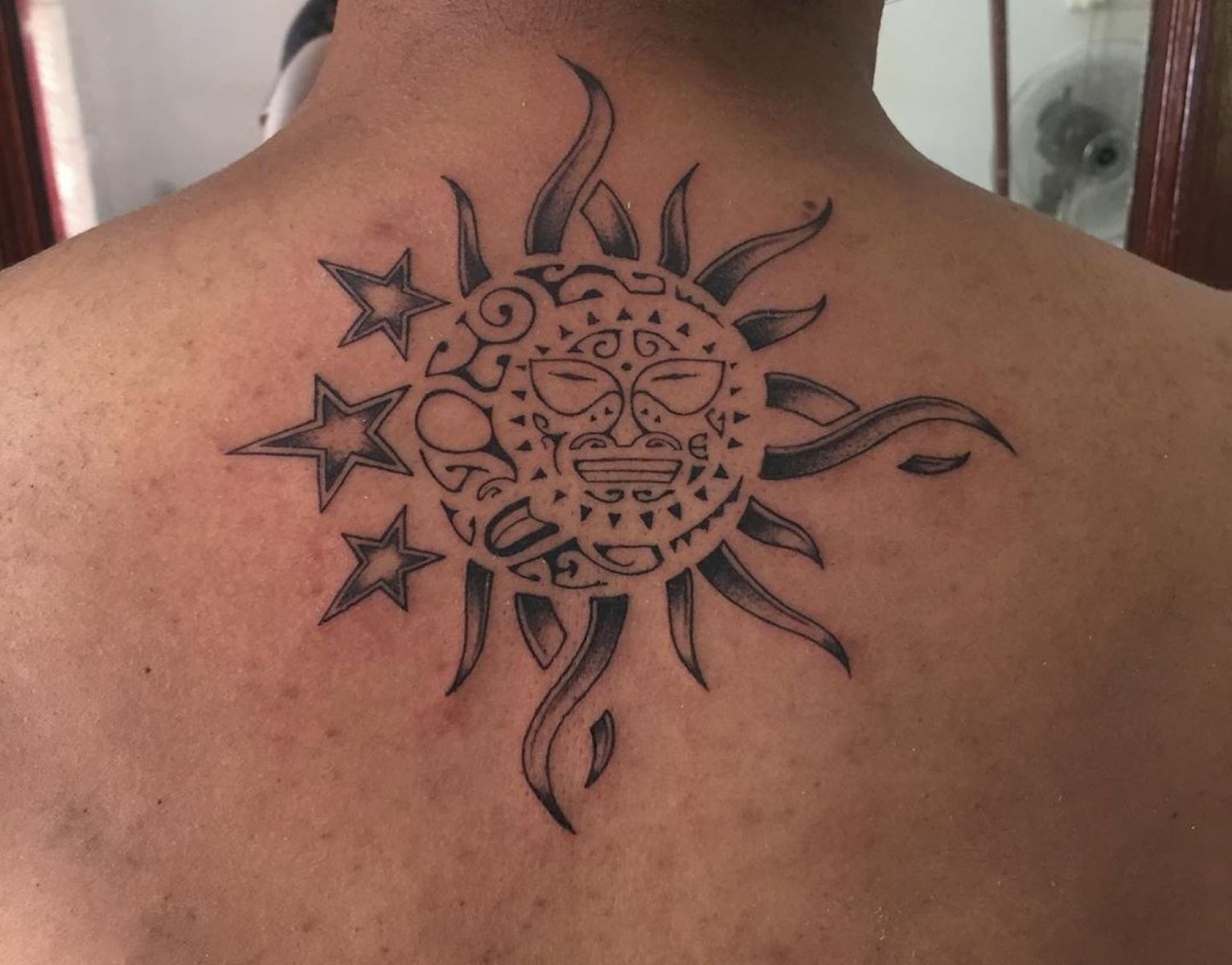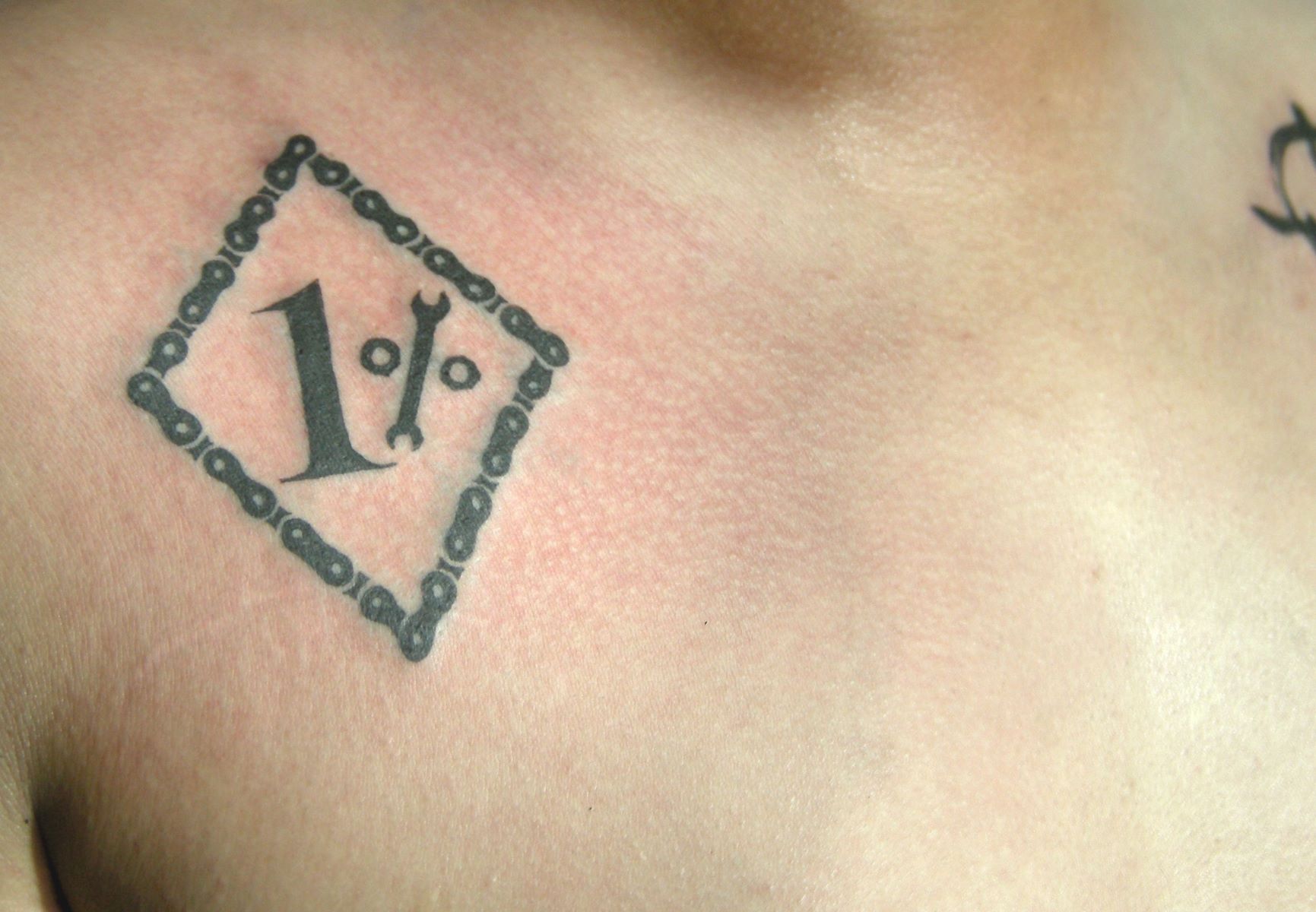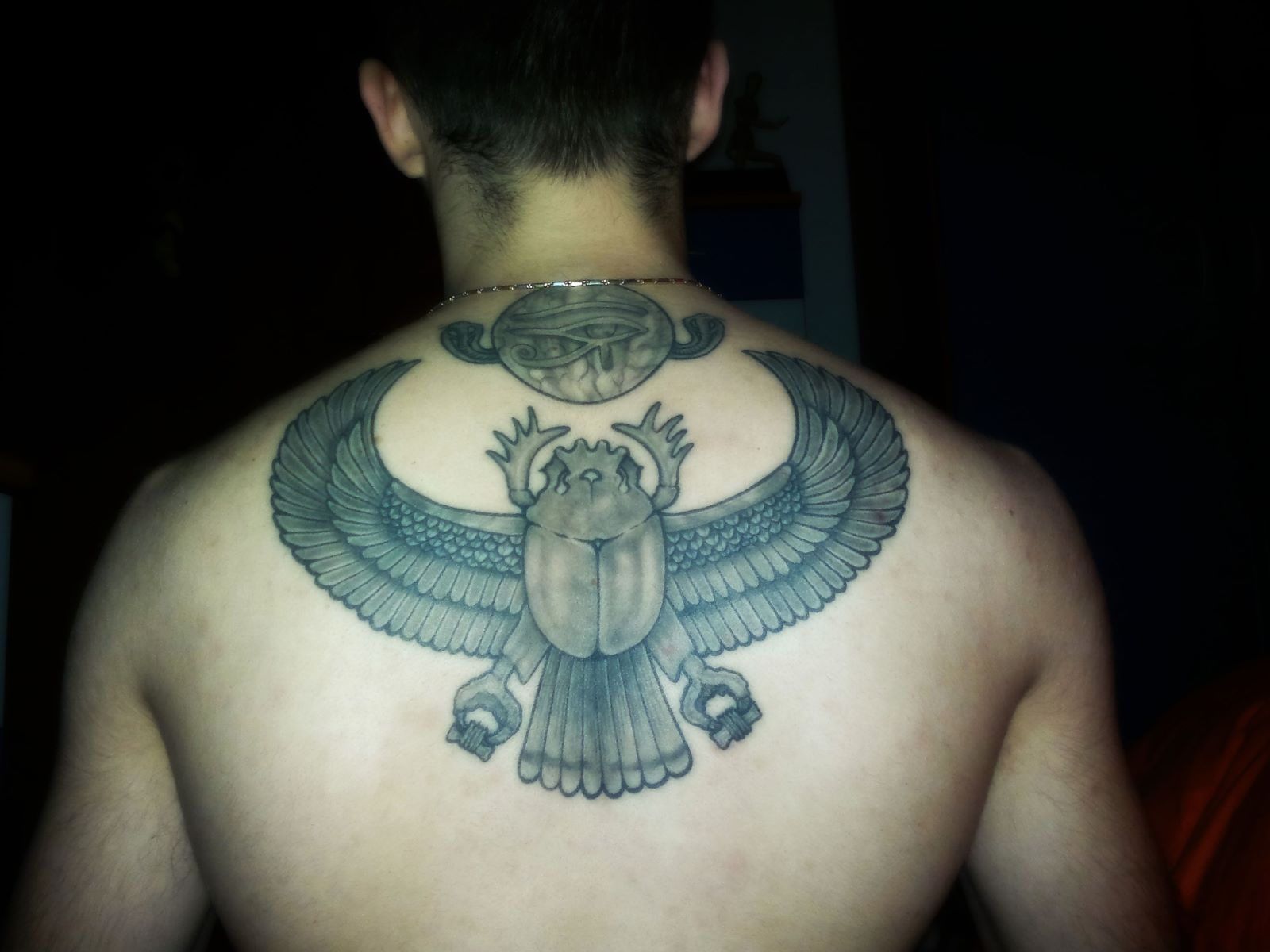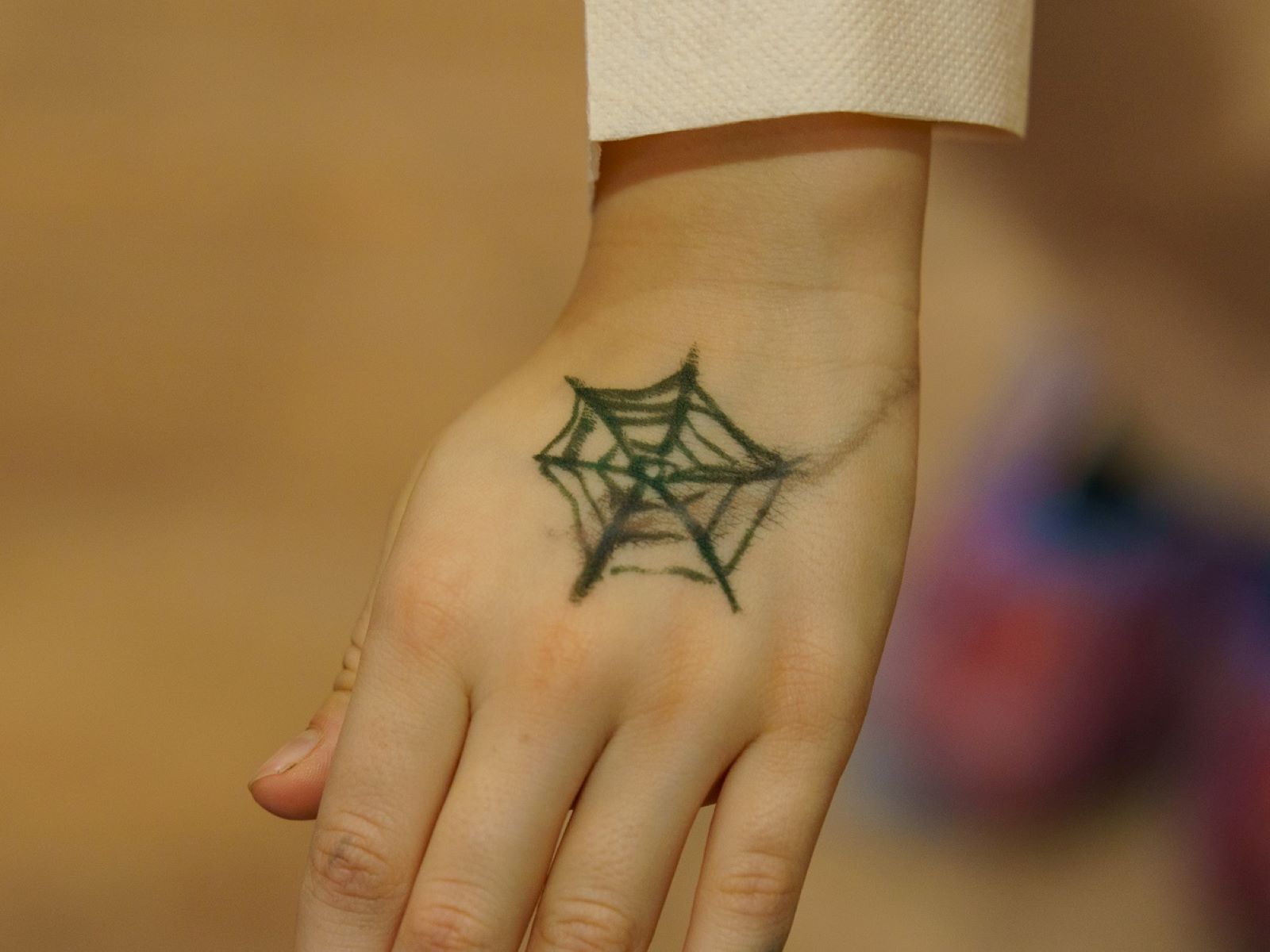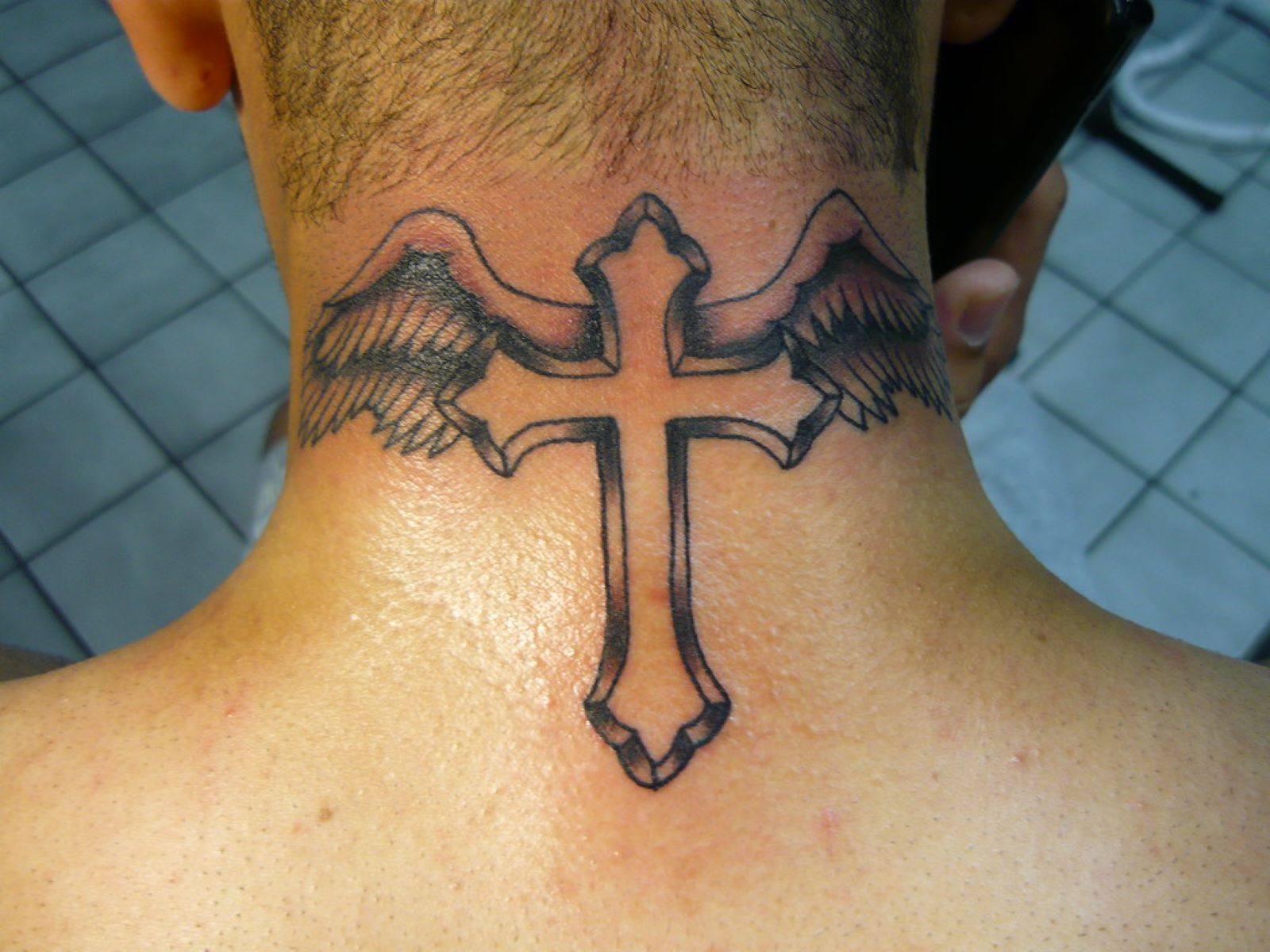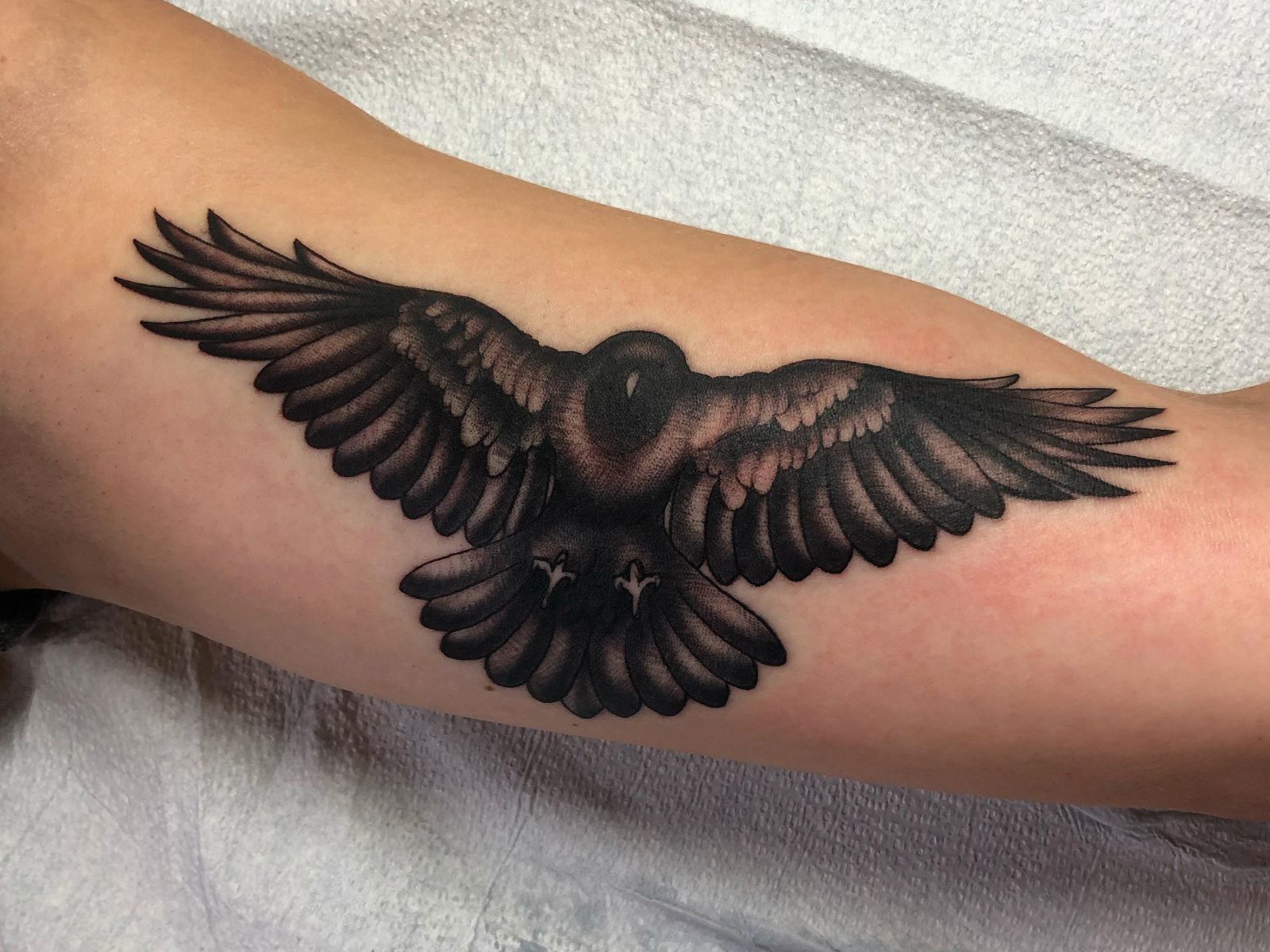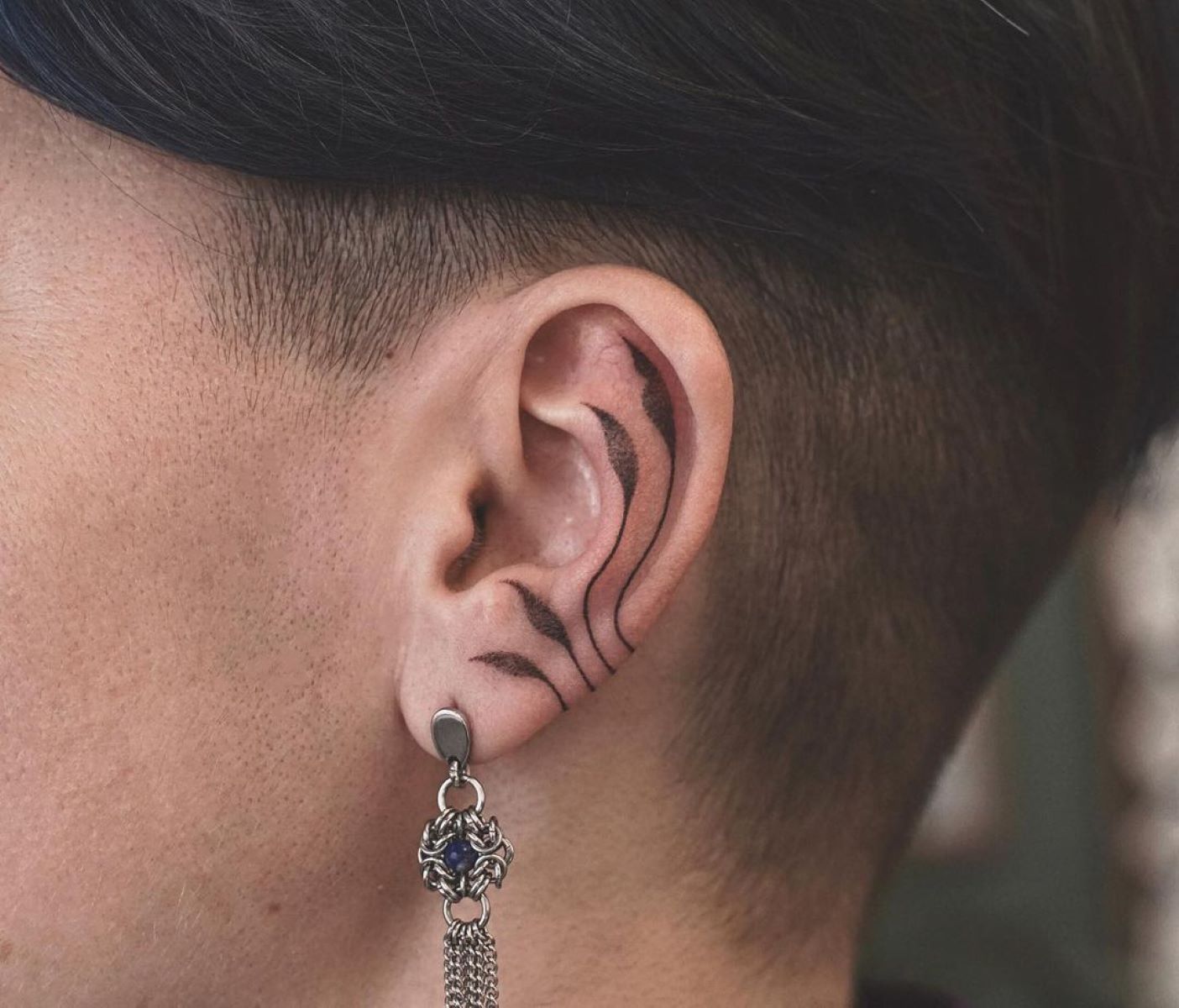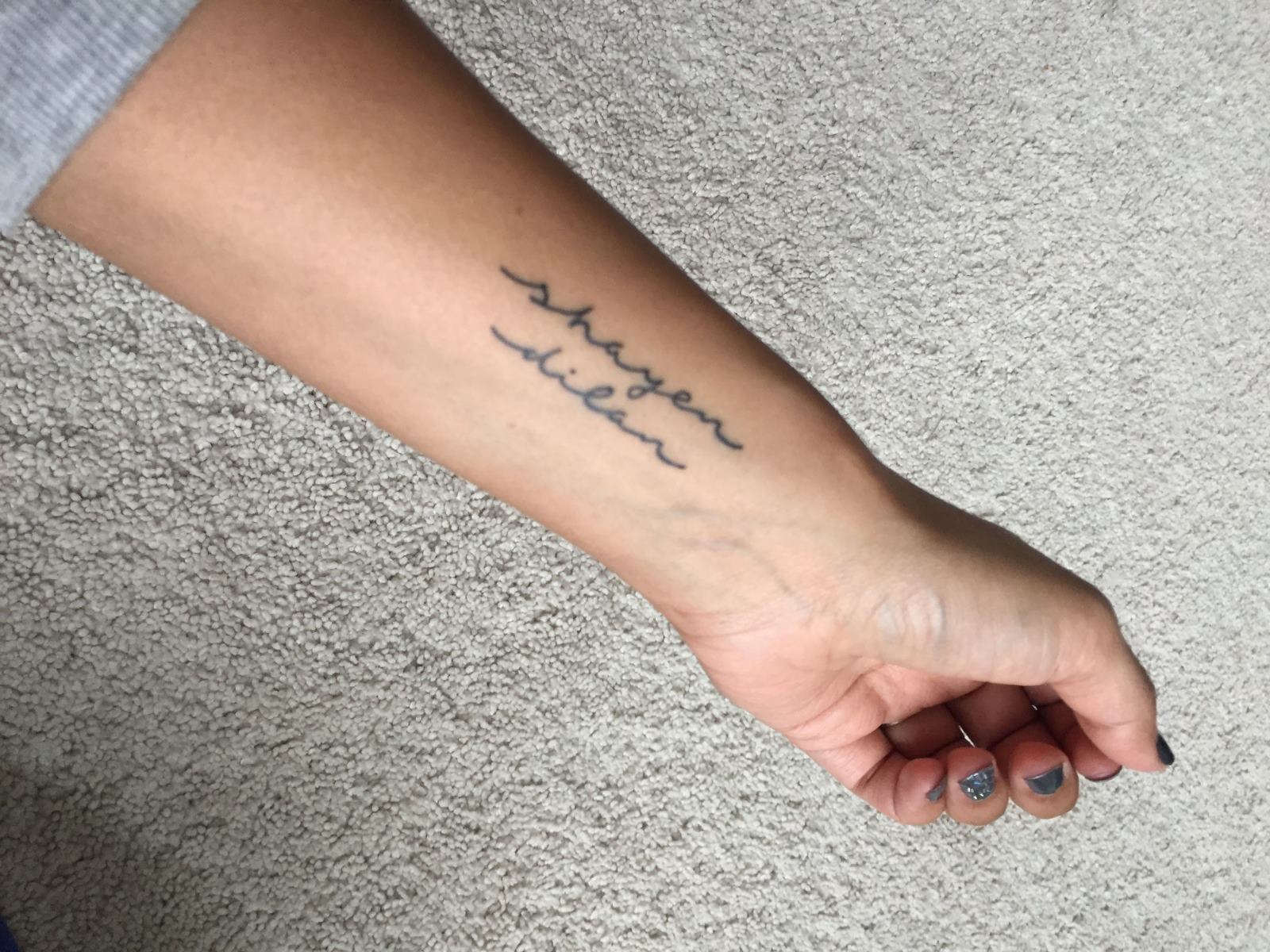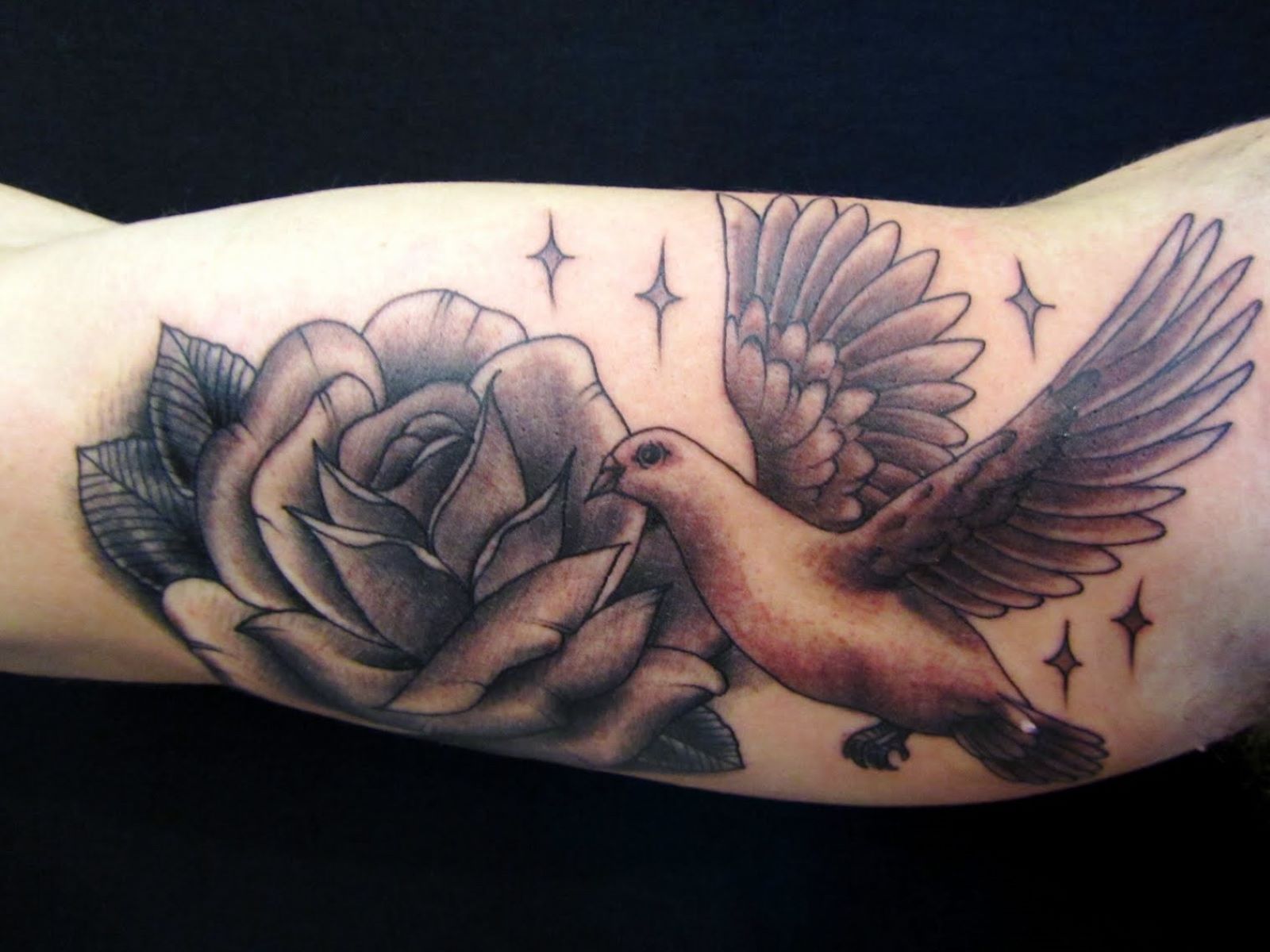Home>Arts and Culture>The Hidden Symbolism Behind The 3 Crosses Tattoo
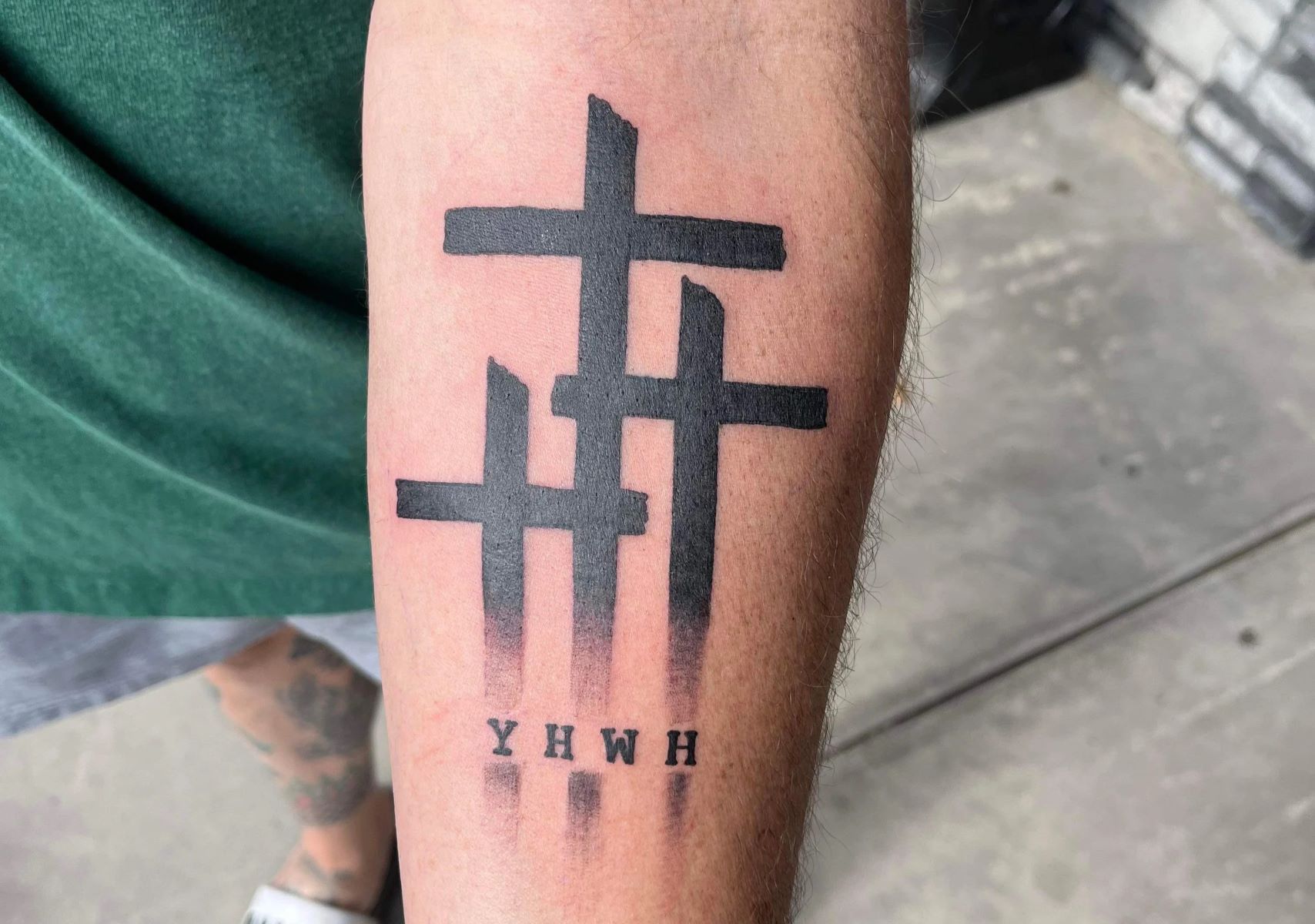

Arts and Culture
The Hidden Symbolism Behind The 3 Crosses Tattoo
Published: February 1, 2024
Discover the deep cultural significance of the 3 crosses tattoo in this insightful exploration of arts and culture. Uncover the hidden symbolism behind this timeless body art.
(Many of the links in this article redirect to a specific reviewed product. Your purchase of these products through affiliate links helps to generate commission for Regretless.com, at no extra cost. Learn more)
Table of Contents
Introduction
Tattoos have been an integral part of human expression and culture for centuries, serving as powerful symbols of identity, beliefs, and personal narratives. Among the myriad of tattoo designs, the cross stands out as a timeless and deeply meaningful emblem. Its rich history, spiritual significance, and enduring appeal have made it a popular choice for individuals seeking to adorn their bodies with a symbol that holds profound personal meaning.
In the realm of tattoo artistry, the cross holds a special place, transcending mere aesthetic appeal to embody a myriad of interpretations and symbolism. Whether inked as a testament of faith, a commemoration of a loved one, or a reflection of inner strength, the cross tattoo serves as a visual representation of the wearer's beliefs and values.
As we delve into the world of cross tattoos, we will explore the historical significance of this enduring symbol, the diverse meanings it embodies, and the intriguing symbolism behind the three crosses tattoo. Each aspect unveils a captivating narrative, offering insight into the profound impact of this timeless emblem on individuals and society as a whole. Let's embark on a journey to unravel the hidden depths of meaning and symbolism behind the three crosses tattoo, a design that resonates with profound significance for those who choose to adorn their skin with its striking imagery.
History of Cross Tattoos
The history of cross tattoos is deeply intertwined with the evolution of human civilization and the diverse cultural tapestry of the world. The use of the cross as a symbol predates the art of tattooing itself, with its origins rooted in ancient religious and spiritual practices. The cross, in its various forms, has been a ubiquitous symbol across different civilizations, carrying diverse meanings and interpretations.
Ancient civilizations such as the Egyptians, Greeks, Romans, and Celts incorporated cross-like symbols into their religious and spiritual practices. These early depictions of the cross symbolized concepts ranging from the four elements to the cardinal directions, reflecting the interconnectedness of nature, spirituality, and the cosmos.
The spread of Christianity significantly influenced the symbolism of the cross, elevating it to a central emblem of the faith. As Christianity expanded across continents, the cross became a potent symbol of devotion, sacrifice, and salvation. The act of marking the skin with a cross served as a visible testament to one's faith, often enduring persecution and adversity with unwavering conviction.
With the rise of tattoo culture, the cross found its place as a prominent and enduring motif. Early tattoo enthusiasts, including sailors, soldiers, and spiritual pilgrims, embraced the cross as a symbol of protection, guidance, and personal faith. The intricate designs and variations of the cross tattoo evolved, reflecting the fusion of cultural influences and individual expressions.
In contemporary times, the cross tattoo continues to hold profound significance for individuals across the globe. Its versatility allows for a myriad of interpretations, from religious devotion to personal remembrance and inner strength. The evolution of cross tattoos mirrors the ever-changing tapestry of human beliefs, values, and cultural expressions, reaffirming the enduring relevance of this timeless symbol in the realm of tattoo artistry.
The Symbolism of Cross Tattoos
The cross, as a quintessential symbol of Christianity, embodies a myriad of profound meanings and symbolism that transcend religious boundaries. At its core, the cross represents sacrifice, redemption, and unwavering faith. Its vertical and horizontal axes intersect to form a powerful union of earthly and divine realms, symbolizing the intersection of the physical and spiritual dimensions of human existence.
The vertical line of the cross signifies the connection between heaven and earth, serving as a reminder of the divine presence in the material world. It represents the upward reach of humanity towards the divine, as well as the descent of divine grace and blessings onto the earth. This vertical axis embodies the spiritual journey of seeking higher truths, enlightenment, and transcendence.
Conversely, the horizontal beam of the cross symbolizes the earthly plane, representing the human experience, community, and the interconnectedness of all living beings. It serves as a reminder of the importance of compassion, empathy, and solidarity with one another. The horizontal axis also signifies the temporal aspects of life, including the passage of time, the cyclical nature of existence, and the interconnectedness of past, present, and future.
Furthermore, the cross holds deep connotations of sacrifice and redemption. It serves as a poignant reminder of the ultimate sacrifice made by Jesus Christ, embodying the concept of selflessness, love, and atonement. This symbolism resonates with individuals seeking to express their own personal journeys of overcoming adversity, finding inner strength, and seeking redemption in the face of life's challenges.
Beyond its religious significance, the cross also holds universal symbolism that transcends specific belief systems. It represents hope, resilience, and the triumph of the human spirit over adversity. The enduring nature of the cross as a symbol of protection, guidance, and strength has made it a popular choice for individuals seeking to commemorate loved ones, honor personal milestones, or draw inspiration from its timeless symbolism.
In the realm of tattoo artistry, the cross serves as a versatile and deeply meaningful motif that resonates with individuals from diverse cultural, spiritual, and personal backgrounds. Whether inscribed as a small and subtle design or as an elaborate and ornate piece, the cross tattoo continues to serve as a powerful symbol of faith, resilience, and the enduring human quest for meaning and transcendence.
The symbolism of cross tattoos encompasses a rich tapestry of meanings, offering individuals the opportunity to express their beliefs, values, and personal narratives through a timeless and universally resonant emblem. It serves as a tangible reminder of the enduring power of faith, love, and the interconnectedness of the human experience across time and culture.
The Three Crosses Tattoo
The three crosses tattoo holds a compelling significance, deeply rooted in both religious and cultural symbolism. This distinctive design features three crosses, often depicted in varying sizes or styles, arranged in a visually striking composition. Each cross within the design carries its own symbolic weight, contributing to the overall narrative conveyed by the tattoo.
In religious contexts, the three crosses are often associated with the crucifixion of Jesus Christ and the two criminals who were crucified alongside him. This poignant event, central to Christian theology, symbolizes themes of redemption, sacrifice, and the promise of salvation. The central cross, representing the crucifixion of Jesus, serves as a powerful focal point within the tattoo, embodying the ultimate act of selflessness and divine love.
The two accompanying crosses, often positioned on either side of the central cross, symbolize the contrasting responses to the crucifixion. One cross represents the penitent thief who expressed remorse and faith, receiving Jesus' assurance of paradise. The other cross signifies the impenitent criminal, reflecting defiance and disbelief. This juxtaposition of responses encapsulates themes of repentance, forgiveness, and the transformative power of faith.
Beyond its religious connotations, the three crosses tattoo also holds broader symbolism that resonates with individuals from diverse backgrounds. The triad of crosses can represent a variety of personal narratives, such as the past, present, and future; life, death, and rebirth; or faith, hope, and love. This versatility allows the tattoo to serve as a deeply personal emblem, reflecting an individual's unique journey, beliefs, and values.
The visual impact of the three crosses tattoo, with its evocative composition and profound symbolism, makes it a compelling choice for those seeking to visually express their faith, commemorate loved ones, or embrace themes of redemption and transformation. Whether rendered in intricate detail or minimalist elegance, the three crosses tattoo stands as a poignant symbol of the enduring human quest for meaning, spiritual connection, and personal growth.
Intriguingly, the three crosses tattoo transcends cultural and religious boundaries, resonating with individuals who seek to embrace its timeless symbolism. Its visual narrative encapsulates themes of faith, resilience, and the interconnectedness of the human experience, making it a captivating and deeply meaningful design within the realm of tattoo artistry.
Interpretations of the Three Crosses Tattoo
The three crosses tattoo holds a profound and multifaceted symbolism that invites a diverse range of interpretations. At its core, this striking design serves as a visual narrative, encapsulating themes of faith, redemption, and the complexities of the human experience. Each element within the tattoo contributes to its rich tapestry of meanings, inviting individuals to infuse their own personal narratives and beliefs into its symbolism.
One interpretation of the three crosses tattoo revolves around the themes of past, present, and future. The central cross may symbolize the trials and tribulations of the past, serving as a poignant reminder of personal struggles and the transformative power of resilience. The flanking crosses, in turn, represent the present moment and the hopeful anticipation of a brighter future. This interpretation resonates with individuals who seek to embrace the symbolism of personal growth, perseverance, and the enduring promise of new beginnings.
Additionally, the triad of crosses can embody the interconnected themes of faith, hope, and love. The central cross, representing faith, serves as a steadfast anchor amidst life's uncertainties, embodying unwavering belief and spiritual conviction. The adjacent crosses symbolize hope, serving as beacons of optimism and resilience in the face of adversity. Finally, the third cross embodies love, reflecting the transformative power of compassion, empathy, and interconnectedness. This interpretation resonates with individuals who seek to celebrate the enduring virtues that enrich the human experience.
Furthermore, the three crosses tattoo can evoke themes of unity, diversity, and interconnectedness. The distinct yet harmonious arrangement of the crosses reflects the diversity of human experiences and beliefs, unified by a shared sense of spiritual connection and collective resilience. This interpretation serves as a powerful reminder of the inherent interconnectedness of humanity, transcending cultural, religious, and personal boundaries.
The profound versatility of the three crosses tattoo allows individuals to infuse their own personal narratives, beliefs, and values into its symbolism, creating a deeply meaningful and visually captivating emblem. Whether as a testament of faith, a commemoration of personal milestones, or a reflection of inner strength, the three crosses tattoo stands as a timeless and evocative design that resonates with the enduring quest for meaning and spiritual connection.
Conclusion
In conclusion, the world of cross tattoos encompasses a rich tapestry of history, symbolism, and personal significance. From its ancient origins to its enduring presence in contemporary tattoo artistry, the cross symbolizes a profound intersection of spirituality, resilience, and the human experience. The three crosses tattoo, in particular, stands as a striking embodiment of these themes, inviting individuals to explore its multifaceted symbolism and infuse it with their own personal narratives.
The history of cross tattoos reflects the timeless resonance of this emblem, transcending cultural and religious boundaries to become a universal symbol of faith, hope, and interconnectedness. Its evolution from ancient civilizations to modern tattoo culture underscores its enduring relevance and capacity to adapt to diverse interpretations.
The symbolism of cross tattoos delves into the depths of human experience, encapsulating themes of sacrifice, redemption, and the enduring quest for spiritual connection. The vertical and horizontal axes of the cross intersect to form a powerful union of the earthly and divine, serving as a poignant reminder of the interconnectedness of the human experience and the enduring presence of faith and resilience.
The three crosses tattoo, with its evocative composition and profound symbolism, offers a visual narrative that transcends religious and cultural boundaries. Its versatility allows for a myriad of interpretations, reflecting themes of personal growth, interconnectedness, and the enduring virtues that enrich the human experience.
In essence, the three crosses tattoo stands as a timeless and evocative design that resonates with the enduring quest for meaning and spiritual connection. Whether as a testament of faith, a commemoration of personal milestones, or a reflection of inner strength, this distinctive emblem continues to captivate individuals seeking to visually express their beliefs, values, and personal narratives through the artistry of tattooing. As the legacy of cross tattoos endures, the three crosses tattoo stands as a poignant symbol of the profound impact of faith, resilience, and the interconnectedness of the human experience across time and culture.
